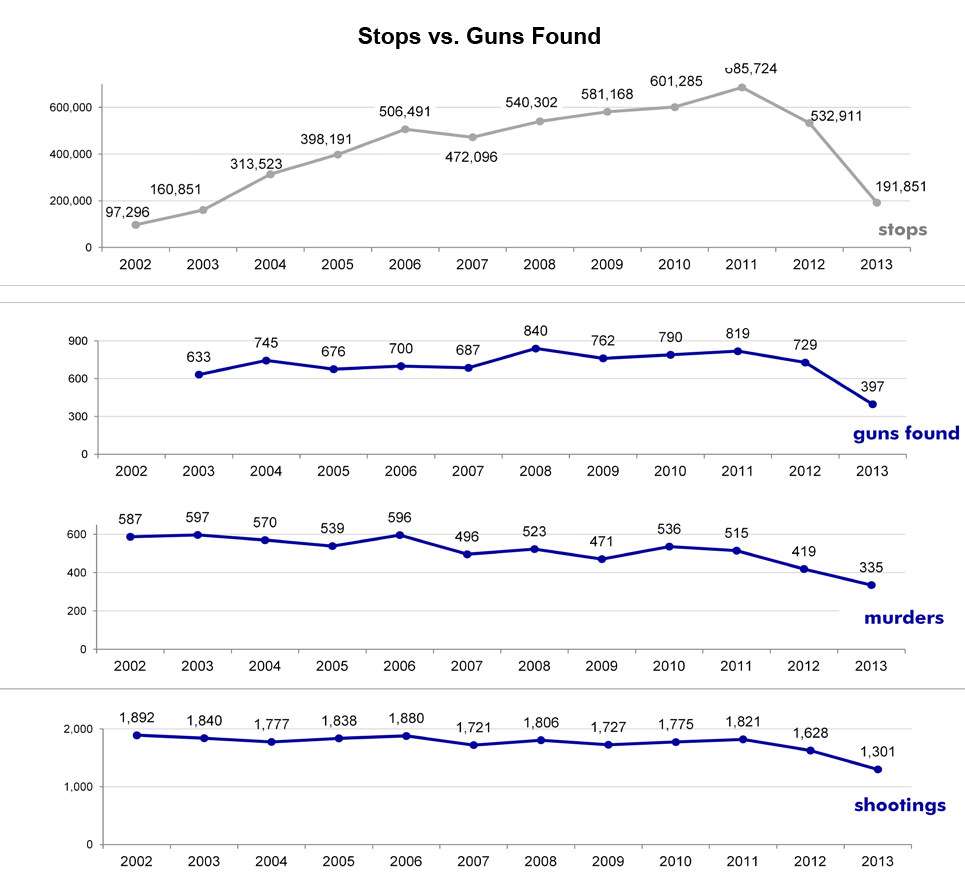Bloomberg's Stop-and-Frisk Explosion Looks Ineffective As Well As Unconstitutional
A new report from the New York Civil Liberties Union (NYCLU) suggests that the massive increase in street stops by the NYPD during Michael Bloomberg's administration had little, if any, impact on violent crime. The number of stop-and-frisk encounters septupled between 2002 and 2011, when it peaked at nearly 700,000, then fell sharply to less than 200,000 in 2013. Meanwhile, the number of murders, which peaked at 597 in 2003, bobbed up and down, then fell sharply after 2011, reaching a low of 335 last year. The number of shootings followed a similar pattern. In both cases the biggest declines coincided with the dramatic reduction in street stops during the last two years under Bloomberg.

The NYCLU's analysis of street stops during the 11 years for which detailed information is available (2003 through 2013) confirms patterns that are by now familiar: The vast majority of the people stopped by police (86 percent) were black or Latino, the vast majority of the stops (88 percent) ended without an arrest or a summons, and most (52 percent) included pat-downs, only 2 percent of which discovered weapons. These numbers are striking because the Supreme Court has said police may stop someone only if they reasonably suspect he is involved in criminal activity and may pat him down only if they reasonably suspect he is armed. Yet police wrongly suspected criminal activity nine times out 10 and were almost never right when they supposedly suspected someone was carrying a weapon. Given this record, it is not surprising that a federal judge concluded the NYPD was routinely violating New Yorkers' Fourth Amendment rights.
In defending the stop-and-frisk program, Bloomberg did not argue that it was constitutional. Instead he argued that it was effective. Specifically, he maintained that stopping and searching lots of young black and Latino men more or less at random discouraged them from carrying guns. The beauty of that argument was that it allowed Bloomberg to turn what looked like failure into success. Although getting guns off the street was one of the program's main justifications, only 0.02 percent of stops resulted in gun seizures. Bloomberg cited the remarkably low gun recovery rate as evidence that the stops were having the intended deterrent effect. But if so, and if that effect resulted in fewer shootings and murders, it is hard to explain why the downward trend in violent crime not only continued but accelerated when the number of stops dropped dramatically.




Show Comments (10)